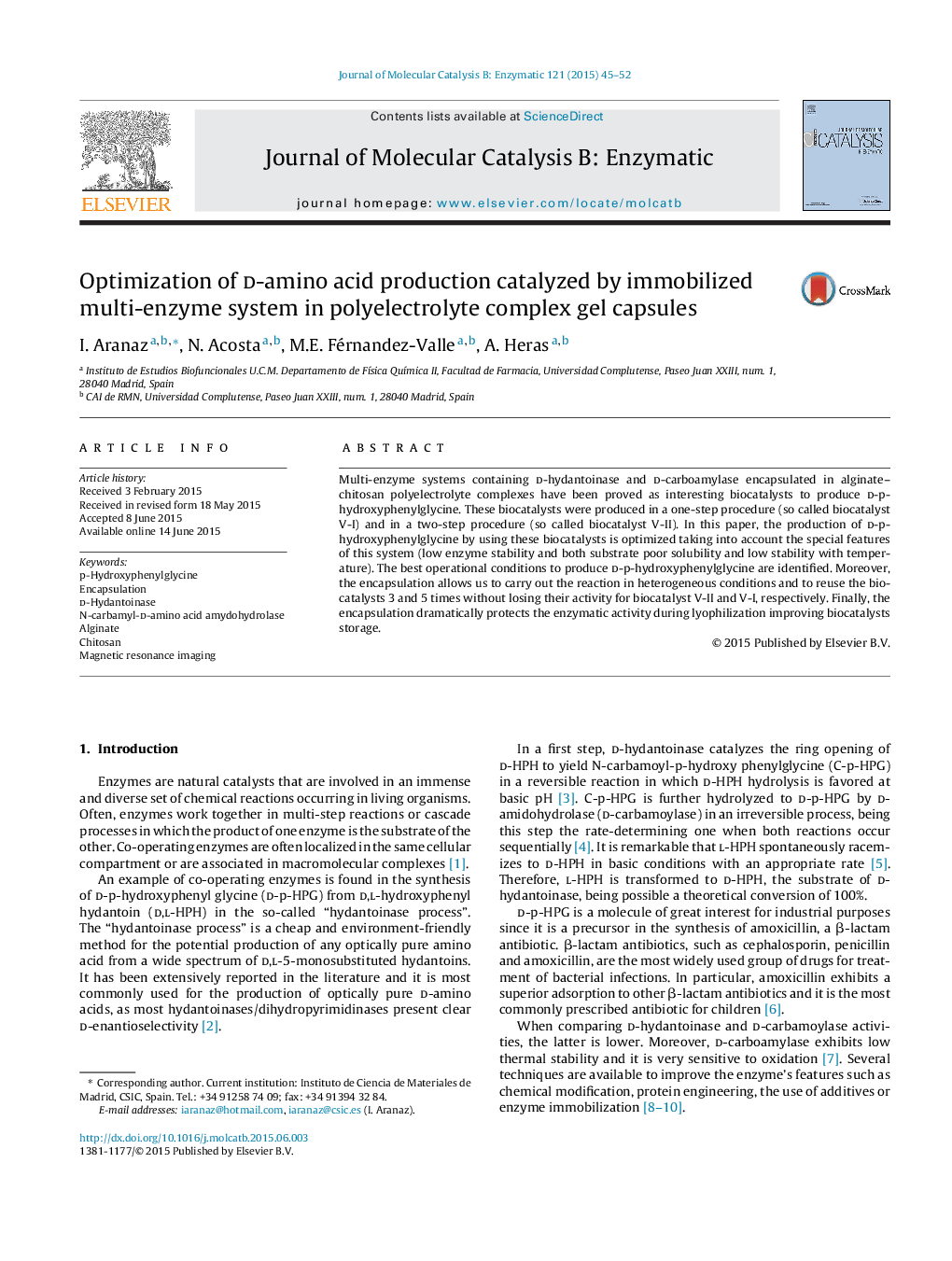| Article ID | Journal | Published Year | Pages | File Type |
|---|---|---|---|---|
| 69473 | Journal of Molecular Catalysis B: Enzymatic | 2015 | 8 Pages |
•Multi-enzyme encapsulation on alginate–chitosan polyelectrolyte matrixes by two different methods is optimized.•The encapsulation allows d-p-hidroxyphenylglycine production in a heterogeneous system avoiding enzyme deactivation due to the surface tension at the interface.•The encapsulation improves biocatalysts storage and allows their reusability.
Multi-enzyme systems containing d-hydantoinase and d-carboamylase encapsulated in alginate–chitosan polyelectrolyte complexes have been proved as interesting biocatalysts to produce d-p-hydroxyphenylglycine. These biocatalysts were produced in a one-step procedure (so called biocatalyst V-I) and in a two-step procedure (so called biocatalyst V-II). In this paper, the production of d-p-hydroxyphenylglycine by using these biocatalysts is optimized taking into account the special features of this system (low enzyme stability and both substrate poor solubility and low stability with temperature). The best operational conditions to produce d-p-hydroxyphenylglycine are identified. Moreover, the encapsulation allows us to carry out the reaction in heterogeneous conditions and to reuse the biocatalysts 3 and 5 times without losing their activity for biocatalyst V-II and V-I, respectively. Finally, the encapsulation dramatically protects the enzymatic activity during lyophilization improving biocatalysts storage.
Graphical abstractFigure optionsDownload full-size imageDownload as PowerPoint slide
